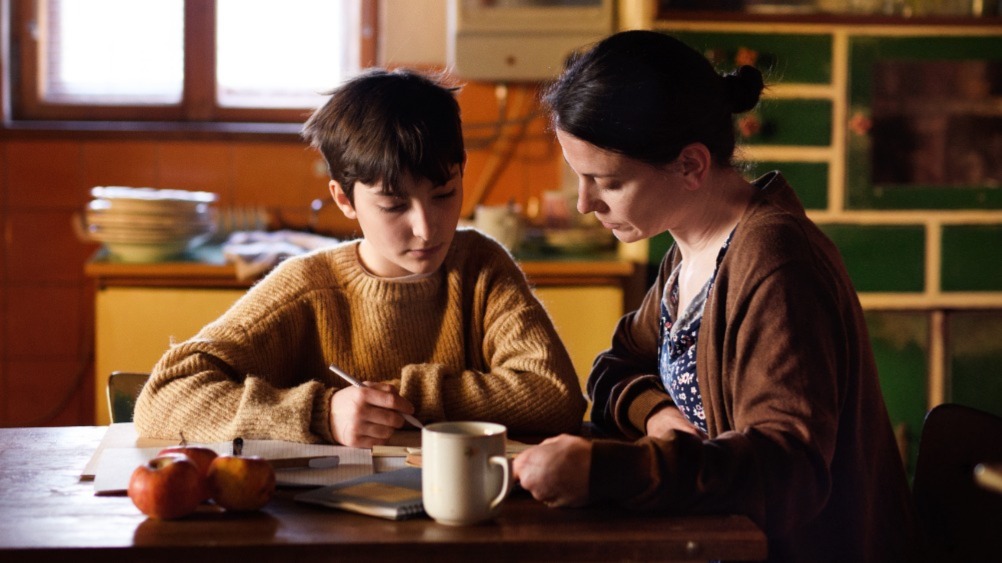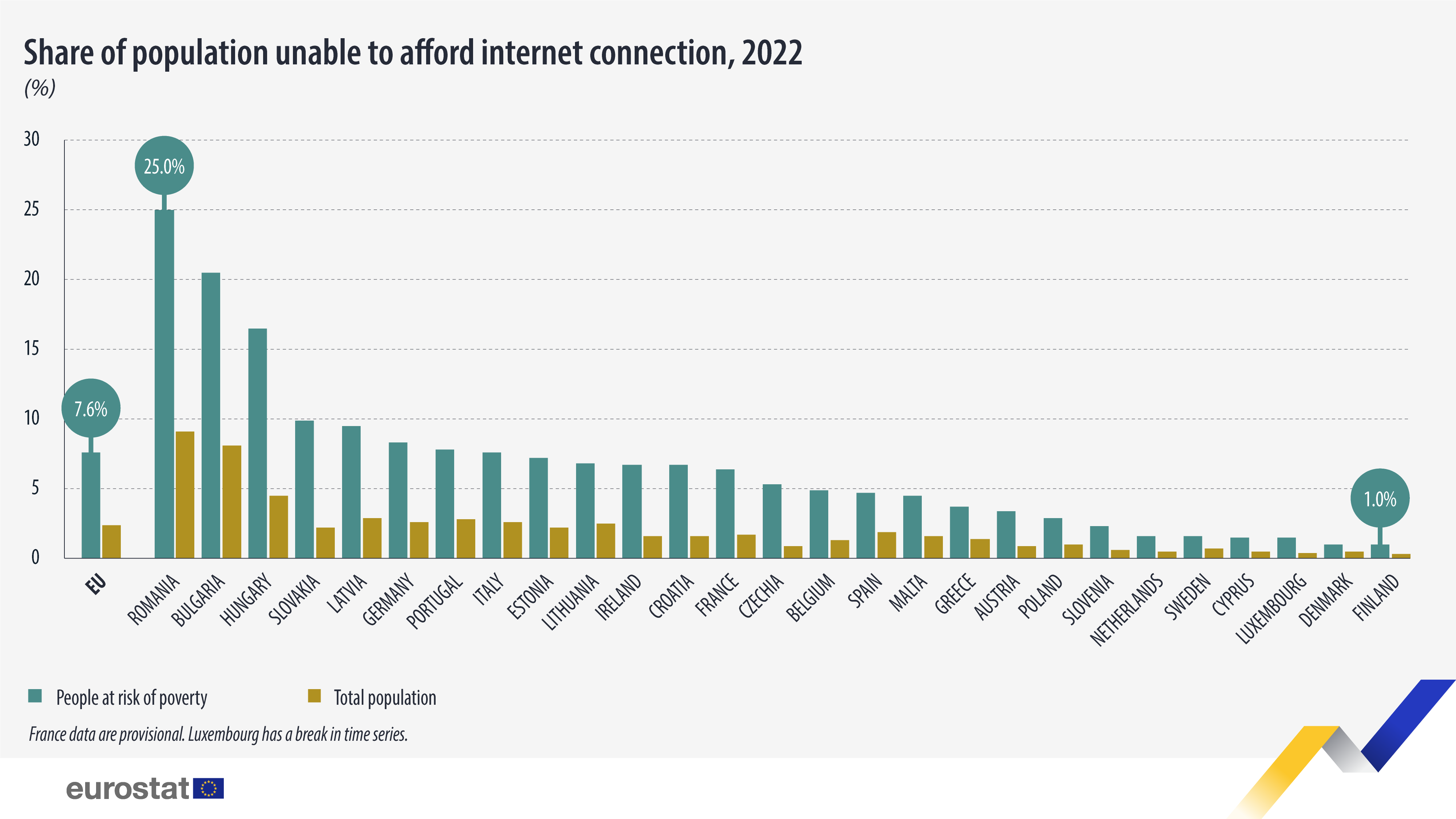How many EU people can afford an internet connection?

In 2022, 2.4% of the EU population were unable to afford an internet connection. On the other hand, the share for people at risk of poverty was higher at 7.6%. Compared with 2021, the situation improved by 0.3 percentage points (pp) (2.7%) for total population and by 0.8 pp (8.4%) for people at risk of poverty.
In 2022, the difference between total and at-risk-of-poverty population in terms of capacity to afford an internet connection was also visible across EU countries: the highest share of people at risk of poverty unable to afford an internet connection was recorded in Romania (25.0%), followed by Bulgaria (20.5%) and Hungary (16.5%). On the other hand, the lowest shares were recorded in Denmark and Finland (both 1.0%), followed by Cyprus and Luxembourg (both 1.5%).
Source dataset: ilc_mddu07a
This news item marks the World Wide Web Day, celebrated every year on August 1st.
Would you like to learn more?
The capacity to afford internet connection for personal use is among the items observed at household level to calculate the severe material and social deprivation rate. This is one of the headline indicators of the European Pillar of Social Rights – Social Scoreboard of indicators.
For more information
- Thematic section on income and living conditions
- Database on income and living conditions
- Thematic section on the European pillar of social rights
- Database on the European pillar of social rights
- European Pillar of Social Rights Action Plan
Methodological notes
- France: provisional data.
If you have any queries, please visit our contact us page.

